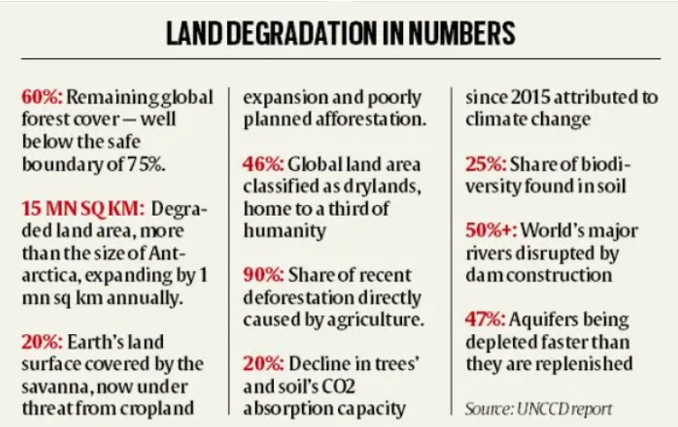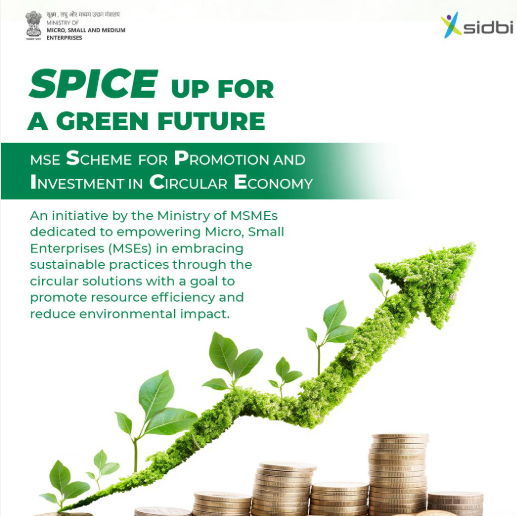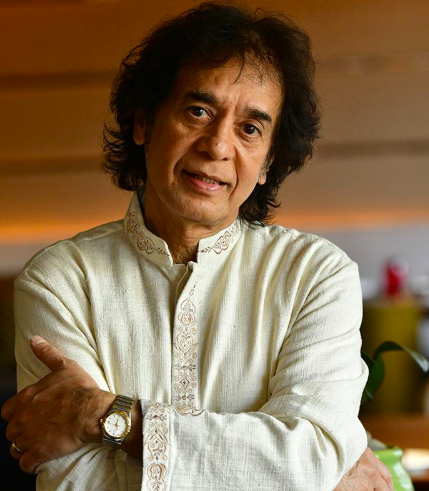17 December 2024 : Daily Current Affairs
1. UN talks on drought deal in Saudi fail to produce pact
- 1. UN talks on drought deal in Saudi fail to produce pact
- 2. How does La Niña affect India’s climate?
- 3. Why the legacy of Jawaharlal Nehru endures even now
- 4. Religion And Reservation
- 5. SRI LANKA–INDIA EXERCISE – 24 (SLINEX-24)
- 6. MSE-SPICE Scheme
- Prelims Facts
- 1. Zakir Hussain, who beat a syncretic rhythm, passes away at 73 in the U.S.
- 2. What is the procedure for removing judges?
(Source – The Hindu, International Edition – Page No. – 4)
| Context |
|
Conclusion of COP16 without a Binding Protocol
- The 12-day UN Convention to Combat Desertification (UNCCD) conference, COP16, hosted in Saudi Arabia, ended without an agreement on a binding protocol to address drought.
- Negotiators required more time to finalize the approach, according to UNCCD Executive Secretary Ibrahim Thiaw.
Significance of a Binding Protocol
- African nations advocated for a binding protocol to ensure governments devise robust drought preparation and response plans.
- Developed countries, however, preferred a “framework,” which many deemed insufficient.
- Indigenous groups supported a protocol to enhance monitoring and planning for drought responses.
Global Context and Challenges
- COP16 followed recent partial or failed environmental negotiations, such as biodiversity talks in Colombia, plastic pollution discussions in South Korea, and climate finance agreements at COP29 in Azerbaijan.
- Droughts, exacerbated by human-induced environmental destruction, cost over $300 billion annually and are projected to impact 75% of the global population by 2050.
Financial Commitments and Future Plans
- During the conference’s first week, pledges of over $12 billion were made by national and regional institutions.
- The Riyadh Global Drought Resilience Partnership aims to mobilize public and private funds for at-risk countries.
- The UNCCD emphasized the need to restore 1.5 billion hectares of land by 2030, requiring $2.6 trillion in global investments.
Next Steps
- Significant progress was made in preparing for a global drought regime, which is expected to be finalized at COP17 in Mongolia in 2026.
- Despite the absence of a protocol, countries can allocate budgets and subsidies to support sustainable land management and farming practices.

| United Nations Convention to Combat Desertification (UNCCD) |
|
| Practice Question: What are the key challenges in establishing a binding global drought protocol under the UNCCD, and how can international cooperation address the escalating impacts of drought worldwide? (150 Words /10 marks) |
2. How does La Niña affect India’s climate?
(Source – The Hindu, International Edition – Page No. – 10)
| Topic: GS1 – Geography |
| Context |
|


What is La Niña?
- La Niña is a phase of the El Niño Southern Oscillation (ENSO) characterized by cooler-than-normal sea surface temperatures in the Pacific Ocean between Indonesia and South America.
- Its counterpart, El Niño, represents warmer-than-normal temperatures in the same region.
- La Niña typically brings normal or above-normal rainfall to India, causes droughts in Africa, and intensifies Atlantic hurricanes.
- Conversely, El Niño leads to extreme summers and droughts in India but increases rainfall in the southern United States.
- Climate change is expected to increase the frequency and intensity of both La Niña and El Niño events, potentially amplifying extreme weather patterns.
Current Status of La Niña
- La Niña, expected to emerge by July 2024, has not materialized yet.
- Historically, La Niña typically forms during the monsoon or pre-monsoon periods, with only two occurrences between October and December since 1950.
- As of December 2024, there is only a 57% chance of its emergence, and even if it does form, it is likely to be weak.
- Oceanic Niño Index (ONI) values, currently around -0.3º C, need to drop below -0.5º C for at least five consecutive three-month periods to confirm a La Niña event.
Meteorological Implications
- Southern Indian cities like Bengaluru and Hyderabad are experiencing colder winters, while north India faces delayed and warmer winters.
- La Niña winters generally feature colder nights, higher daytime temperatures, faster wind speeds, and a lower planetary boundary layer height (PBLH).
- Lower PBLH could trap pollutants near the ground, worsening air quality, but faster winds might disperse them.
Impact on Monsoons and Heatwaves
- El Niño often disrupts monsoons, with India receiving below-average rainfall during most El Niño years.
- La Niña promotes robust monsoons, as seen in 2020-2022, which brought above-normal rainfall.
- If La Niña persists into 2025, it could mitigate heat waves and improve monsoon rainfall.
| PYQ: Drought has been recognised as a disaster in view of its party expense, temporal duration, slow onset and lasting effect on various vulnerable sections. With a focus on the September 2010 guidelines from the National disaster management authority, discuss the mechanism for preparedness to deal with the El Nino and La Nina fallouts in India. (200 words/12.5m) (UPSC CSE (M) GS-3 2014) |
| Practice Question: Examine the significance of La Niña in shaping India’s weather patterns, including its effects on monsoons, winters, and air quality, while assessing the implications of evolving ENSO phases in the context of climate change. (250 Words /15 marks) |
3. Why the legacy of Jawaharlal Nehru endures even now
(Source – The Hindu, International Edition – Page No. – 11)
| Context |
|
Jawaharlal Nehru’s Contributions to India
Institutionalization of Democracy
- Played a key role in drafting and implementing the Indian Constitution, ensuring democratic governance.
- Established parliamentary democracy as India’s political framework, fostering a culture of debates and elections.
- Strengthened democratic institutions, ensuring the separation of powers and individual rights.
Economic Vision
- Advocated for a mixed economy combining public and private sector efforts to promote growth and equity.
- Initiated the Five-Year Plans, focusing on industrialization, self-reliance, and reducing economic disparities.
- Established major public sector enterprises to build India’s industrial base, such as Bharat Heavy Electricals Limited (BHEL) and Hindustan Steel.
Focus on Education and Scientific Development
- Founded institutions like the Indian Institutes of Technology (IITs), Indian Institutes of Management (IIMs), and the All India Institute of Medical Sciences (AIIMS).
- Promoted scientific research by establishing the Council of Scientific and Industrial Research (CSIR) and the Atomic Energy Commission.
- Introduced free primary education and emphasized the role of education in national development.
Foreign Policy and Non-Alignment
- Championed the Non-Aligned Movement (NAM), advocating neutrality during the Cold War.
- Played a pivotal role in the Bandung Conference of 1955, uniting newly independent countries against colonialism and imperialism.
- Promoted global peace and disarmament through diplomacy and peaceful conflict resolution.
Social and Cultural Contributions
- Advocated for secularism, promoting unity in India’s diverse religious and cultural fabric.
- Encouraged land reforms to reduce inequality and empower rural populations.
- Promoted gender equality by supporting progressive laws on women’s rights.
Global Solidarity
- Acted as a voice for the Third World, building alliances with other decolonized nations to address global inequalities.
- Worked towards poverty eradication and social justice both within and beyond India.
Legacy
- Nehru’s leadership set the foundation for modern India’s democratic, scientific, and economic growth.
- His contributions continue to shape India’s development trajectory and global standing.
| Practice Question: Discuss the contributions of Jawaharlal Nehru in shaping post-independence India, focusing on his policies in the fields of democracy, economic development, and foreign relations. How did his vision influence India’s global standing? (250 Words /15 marks) |
4. Religion And Reservation
(Source: Indian Express; Section: Explained; Page: 16)
| Topic: GS2 – Indian Polity |
| Context: |
|
Analysis of News:
Supreme Court’s Observations on Religion and Reservation
- On December 9, the Supreme Court reiterated that “reservation cannot be on the basis of religion.”
- This was in the context of a challenge to the Calcutta High Court’s decision striking down OBC reservations for 77 classes, primarily from the Muslim community.
Reservations for Religious Groups in OBC Quota
- Article 16(4) of the Constitution allows reservations for “any backward class of citizens,” not explicitly barring religious groups.
- States like Kerala, Karnataka, and Tamil Nadu have historically provided OBC reservations for Muslims based on socio-economic studies, including findings of backwardness by commissions like the Justice O. Chinnappa Reddy and Sachar Committees.
- However, the 1992 Supreme Court ruling in Indra Sawhney v. Union of India held that religion alone cannot be the sole criterion for reservation.
Challenges to SC Reservations Based on Religion
- Article 341(1) specifies Scheduled Castes (SC) based on caste identity but restricts SC status to Hindus, Sikhs, and Buddhists.
- The Constitution (Scheduled Castes) Order, 1950, excludes converts to Islam and Christianity, upheld in cases like Soosai v. Union of India (1985).
- While the Ranganath Mishra Commission (2007) recommended SC status for all caste converts, regardless of religion, the government has not accepted the report.
Ongoing Supreme Court Cases
- Challenges to the constitutionality of the 1950 SC Order, particularly its exclusion of Muslims and Christians, remain unresolved.
- The Centre has constituted a new commission, chaired by former Chief Justice K G Balakrishnan, to examine if SC status should be extended to religious converts, with a final report due in October 2025.
OBC Reservations for Religious Groups Under Scrutiny
- The Supreme Court is reviewing cases like the Andhra Pradesh government’s attempt to provide 5% OBC reservations to Muslims (struck down in 2005).
- Courts have consistently required “objective criteria” to determine backwardness rather than religion as a sole basis for reservation.
The article concludes that while reservations aim to address historical inequalities, using religion as the sole criterion is constitutionally and judicially contentious. A balanced approach, backed by objective evidence, is essential to ensure that reservation policies promote genuine social and economic upliftment.
5. SRI LANKA–INDIA EXERCISE – 24 (SLINEX-24)
(Source – https://pib.gov.in/PressReleseDetail.aspx?PRID=2084913®=3&lang=1 )
| Context |
|
Analysis of the news:
- SLINEX 2024 will take place from 17 to 20 December 2024 at Visakhapatnam under the Eastern Naval Command.
- The exercise will have two phases: Harbour Phase (17-18 December) and Sea Phase (19-20 December).
- Initiated in 2005, SLINEX strengthens maritime cooperation between India and Sri Lanka.
- Indian participants: INS Sumitra (Naval Offshore Patrol Vessel) and a Special Forces team.
- Sri Lankan participants: SLNS Sayura (Offshore Patrol Vessel) with a Special Forces team.
- The Harbour Phase will include professional and social interactions to foster mutual understanding.
- The Sea Phase will involve joint drills such as Special Forces operations, gun firings, seamanship, and helicopter operations.
- The 2024 edition aims to enhance interoperability and promote a rules-based maritime environment.
6. MSE-SPICE Scheme
(Source – https://pib.gov.in/PressReleseDetail.aspx?PRID=2084812®=3&lang=1 )
| Context |
|

MSE-SPICE Scheme :
- The MSE-SPICE scheme promotes the adoption of Circular Economy (CE) solutions by more than 3400 Micro and Small Enterprises (MSEs).
- It focuses on reducing, reusing, and recycling resources to enhance sustainability in the MSME sector.
- The scheme targets 11 sectors: plastic, rubber, e-waste, municipal waste, compressed bio-gas, lithium-ion batteries, end-of-life vehicles, ferrous and non-ferrous scrap metal, solar panels, gypsum, and hazardous industrial waste.
- A total outlay of Rs. 472.5 crore has been allocated for the scheme.
- Total expenditure under the scheme, as of 12 December 2024, is Rs. 1.31 crore.
- It aims to encourage sustainable practices through waste reprocessing and resource recirculation.
Prelims Facts
1. Zakir Hussain, who beat a syncretic rhythm, passes away at 73 in the U.S.
(Source – The Hindu, International Edition – Page No. – 4)
| Context |
|
Ustad Zakir Hussain:
- Ustad Zakir Hussain (1951-2024) was a globally celebrated tabla maestro and cultural ambassador of India.

- Known for blending Indian classical music with global genres, he revolutionized the perception of tabla as a melodic and rhythmic instrument.
- Born to tabla legend Ustad Alla Rakha, he inherited the Punjab gharana tradition and elevated it with his creativity and showmanship.
- A child prodigy, he began playing tabla at the age of three and became a professional performer by his teenage years.
- He co-founded the Shakti band in 1973 with John McLaughlin, blending Indian classical music with Western jazz.
- Hussain composed music for films like Mr. and Mrs. Iyer and Manto and worked on international projects such as Apocalypse Now.
- A four-time Grammy Award winner, he was a recipient of the Padma Vibhushan, India’s second-highest civilian honor.
- His humility and curiosity continued to define his journey, inspiring musicians worldwide.
2. What is the procedure for removing judges?
(Source – The Hindu, International Edition – Page No. – 10)
| Context |
|
Constitutional Provisions for Removal
- Articles 124 and 217 of the Constitution govern the removal of Supreme Court and High Court judges.
- A judge can be removed by the President for “proved misbehaviour” or “incapacity” after approval by both Houses of Parliament.
- The motion must pass with a special majority—two-thirds of the members present and voting, and a majority of the total membership.
- Terms like “proved misbehaviour” or “incapacity” are undefined in the Constitution but have been interpreted by the Supreme Court to include acts such as corruption or moral turpitude.
Procedure under the Judges (Inquiry) Act, 1968
- A motion must be signed by at least 50 members of the Rajya Sabha or 100 members of the Lok Sabha.
- The Chairman or Speaker has the discretion to admit or reject the motion.
- If admitted, a three-member committee comprising judges and a distinguished jurist investigates the allegations.
- If the judge is found guilty, the motion proceeds to Parliament, where it requires a special majority to pass.
Challenges and Recommendations
- Removal of judges is rare due to the stringent process, ensuring judicial independence.
- The case underscores the need for high standards of judicial conduct to maintain public trust in the judiciary.

